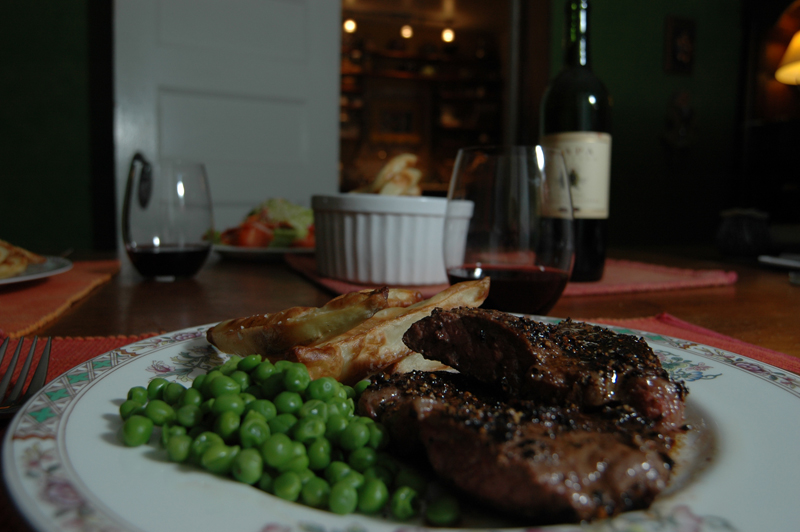Beef Brisket is in the refrigerator right now, in a zip-lock plastic bag covered with salt and spices like crushed pepper, nutmeg, bay leaf, thyme. It’s been turned once a day for the past week, and weighted down with steel plates because we happen to have them. In a normal kitchen you could use a smaller pan filled with water, or heavy cans of tomatoes — anything that’s heavy.
The whole process took about 10 minutes originally. And the turning took a minute once a day for 7 days. The benefit to corning your own beef: no nitrates, you can choose the quality of the meat and you are in control of the taste. Use the best spices and salt or the ones you like best. The taste will be different for any combination, will taste fresher, but still have that recognized quality that we like about corned beef — just not the lipstick pink appearance.
After seven days, we took the brisket out of the bag and thoroughly rinsed it. Let it soak for a few minutes in water. Otherwise it will be too salty when cooked.
After rinsing, the brisket was placed in roasting pan in the oven at 225 degrees. And you can leave it all day. Better than a crock pot is a decent oven. You don’t touch the oven, so it maintains its heat and is cost effective. The meat never gets too hot. A watched pot may never boil, but an unwatched crock pot might. Never do you want the liquid to boil or the meat will be tough. In Denver water boils at 197 degrees F instead of 212, but that’s still too hot for the beef we want, which is so tender that it falls apart on your fork.
An hour before I wanted to serve the corned beef, I added chopped carrots, onion and cabbage wedges to the roasting pan. I roasted potatoes on a cookie sheet on another rack in the oven. This way the potatoes were crusty oven fries, but you could add potatoes to the liquid in the roasting pan and have boiled potatoes, if you like that style.
The entire dish was served in one bowl with a wide rim where see set the oven fries.
